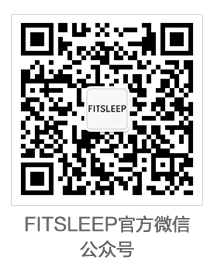- ALPHA WAVE
- α 波新品发布会
- 上海礼品展会
- α 波新品发布会
- 上海礼品展会
- α 波新品发布会
- 上海礼品展会
- α 波新品发布会
- 上海礼品展会
Medical theory and clinical trial verification I. THE MEDICAL THEORY BEHIND ALPHA WAVE
Human sleep can be split into 4 different stages: Awake, Light sleep, Intermediate sleep and Deep sleep. These stages progress cyclically from light sleep to deep sleep, and one cycle is known as a complete sleep cycle. During each night most people undergo 4-5 sleep cycles, each sleep cycle taking an average of 90-110 minutes.
During the night, light sleep takes up roughly 50% of sleep, deep sleep 20%, REM (Rapid eye movement, when most dreams occur) sleep 25%, and the remaining 5% is taken up by brief moments of wakefulness.
Human brain waves can be principally split into four types: Alpha waves, Beta waves, Theta waves and Delta waves, although there are others. High frequency Beta brainwaves dominate our normal waking state of consciousness: The more active, or most anxious you are, the higher frequency the Beta wave. As the working day ends, when we get increasingly tired, the Beta wave frequency gradually drops. When you completely relax and close your eyes to rest, the Beta waves will transition into lower frequency Alpha waves.
After a few minutes, as your breathing slows and your eye movement and brain wave frequency falls, you enter the first stage of sleep, where the brain starts to emit Theta waves.
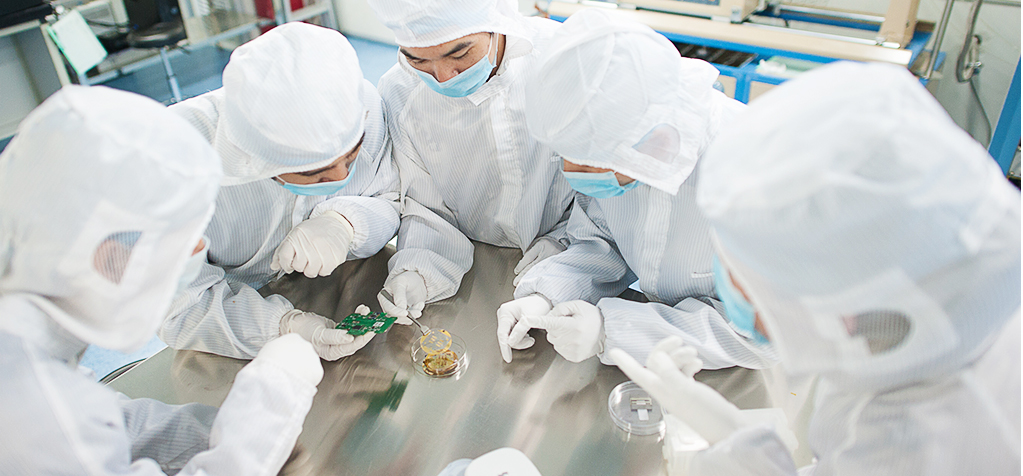
Delta waves then appear when your muscles start to relax, your mind is empty, your heart rate slows and your body temperature decreases. Delta waves are able to suspend external (noise) and internal awareness (hunger) and play an important role in preventing these factors from waking you up. At this point you start to enter the second stage of sleep. During this stage, muscle activity further decreases and activity in the parts of the brain associated with thought, reasoning, language and problem solving gradually decreases, so the brain is able to properly rest. The first and second stages of sleep are known as Light sleep. 20 minutes after entering the second stage of sleep, your brain and body starts to completely relax, with brain activity at its lowest and emitting very slow Delta waves, hence entering the third and fourth stage of sleep. These two stages are known as Deep sleep.
The main aims of aiding sleep are to reduce the time required to enter sleep, and prolong deep sleep. During deep sleep, the brain is in full rejuvenation state, which aids maintenance of skin cells. Deep sleep is acknowledged as “the best sleep”, with key functions such as energy restoration, self-maintenance and repair, and “beauty sleep”.
Under normal conditions Alpha waves peak in number and frequency when healthy individuals are awake and quiet with eyes closed. Alpha wave frequency, amplitude and spatial distribution are important indicators of brain status.
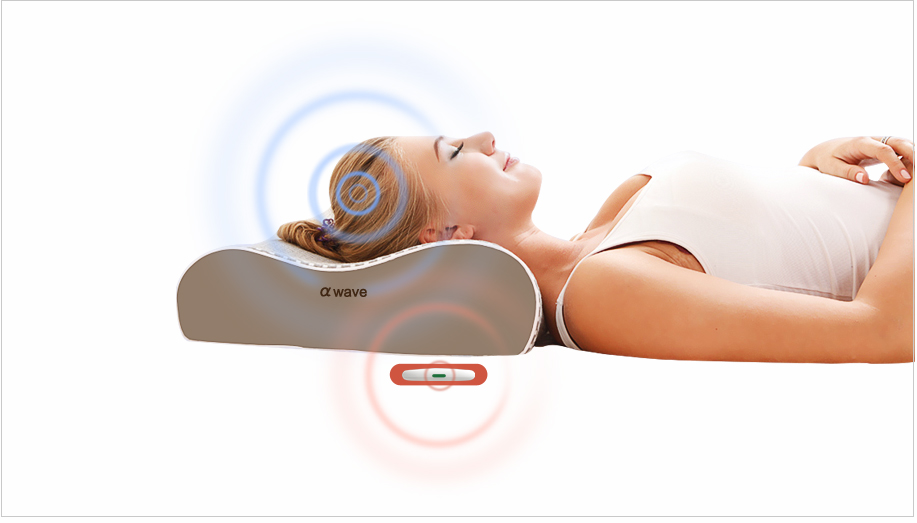 II. MECHANISM BEHIND THE ALPHA WAVE SLEEP SYSTEM
II. MECHANISM BEHIND THE ALPHA WAVE SLEEP SYSTEM
The Alpha wave sleep induction chip system works through a chip, which can emit alpha waves, that is connected to other circuits and acts together to induce sleep. This system has three core components: The Alpha wave sleep induction chip, brain wave bio-feedback system and deep artificial intelligence learning system.
A. Alpha wave sleep induction chip systemWhen the user is falling asleep and during sleep, the alpha wave sleep induction chip will emit alpha waves at appropriate times. The emitted alpha waves will interact with alpha waves from the frontal lobe and stimulate the user to fall asleep.
The alpha wave sleep induction chip system is able to release energy waves in the form alpha waves, and is coupled with a monitoring system that is able to detect precisely the users current sleep and biological status and sleep cycle position. The system is then able t o customize emitted energy wave power, frequency and other specific messages,to result in the best sleep induction effect.
B. Biofeedback systemThe brain wave bio-feedback system is able to calculate a personalized energy wave frequency through monitoring user brain activity. The alpha wave frequency of different individuals in differing sleep environments and distinct stages of the sleep cycle can vary, so to detect the optimal frequency for sleep induction, we scan the user, with the details mentioned below: Between 0 – 13 Hz frequencies, each frequency band is partitioned finely (such as using divisions of every 0.1Hz), and all of these frequencies are initially emitted using energy waves. During this process, feedback on biological parameters such as heart rate, breathing and body movement (among others) are taken.
Once the frequency scan is completed, by comparing the biological parameters taken, the system is able to determine the ideal energy wave frequency through the ideal biological parameters. The system then emits this frequency to achieve optimal sleep induction.
Previous studies have shown that human sleep undergoes sleep cycles, and that sleep status cycles from awake to light sleep and deep sleep, and then back to light sleep, which constitutes a full sleep cycle. Every night most people go through 4-5 sleep cycles. When people cycle from deep sleep to light sleep, they are most susceptible to waking from external interference such as noise, movement, dreams etc. Consequently, during this stage the Alpha wave sleep induction chip system will re-activate and emit energy waves, to guide the user back into deep sleep.
C. Deep artificial intelligence learning systemThe deep artificial intelligence learning system is similar to a conditioned reflex, where the reflex depends on external signal input. A comprehensive and efficient reflex system will be built as the type of signal input and amount of input information increases. The system can learn more than 50 multi-dimensional variables for different groups of people through machine learning, and through this information was able to construct a 390-parameter feedback network, to analyze the sleeping habits, sleep cycles and biological parameters of each user. Hence the system can thoroughly document the users sleeping rhythm, leading even more precise Alpha wave emissions to induce sleep, and achieving personalized sleep induction.
Using the above technology, the Alpha wave sleep induction system is able to realize intelligent and personalized sleep induction, where the system is able to continually improve itself to achieve the best sleep induction effects.
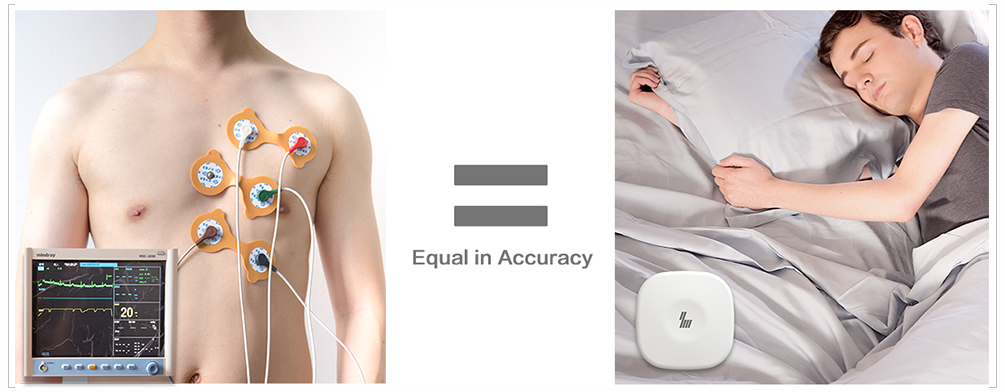 III. CLINICAL TRIAL VERIFICATION
III. CLINICAL TRIAL VERIFICATION
We collaborated with Sleep Research Center of Peking University to invite 800 volunteers to participate in this trial. The participants were not told whether the alpha wave function was activated, and we monitored their sleep for 60 days. Based on the tables above, you can see the effectiveness of the Alpha Wave function.
A. Participants and equipment800 volunteers between the ages of 15 – 80, of which 200 were underage (15 – 18 years old), 200 were young (19 – 45 years old), 200 were middle-aged (45 – 59 years old) and 200 were elderly (60 – 80 years old).
FitSleep α1 device, FitSleep App; SOMNOscreen PSG multi-functional sleep monitor.
B. Presentation of Clinical dataComparison of the data between the participants using a FitSleep α1 device with the alpha wave function activated and those using a device with the alpha wave function inactivated (The x axis shows the time during the test (in days), and the y axis shows the average time taken to fall asleep, deep sleep Units
C. Analysis of dataThe average time to fall asleep, deep sleep proportion and sleep quality score for both the active and inactive FitSleep α1 groups was similar in the first 10 days, which is before the FitSleep α1 devices are turned on, suggesting negligible differences in sleep between these two groups. However, after the FitSleep α1 devices were turned on, participants using alpha wave activated devices exhibited a gradual decrease in time to fall asleep, an increase in deep sleep proportion, and also an increase in their sleep quality score. In comparison, participants using devices with an inactivated alpha wave function showed no noticeable difference in the three parameters mentioned above. This suggests that the FitSleep α1 device is able to efficiently increase sleep quality and decrease the time to fall asleep.
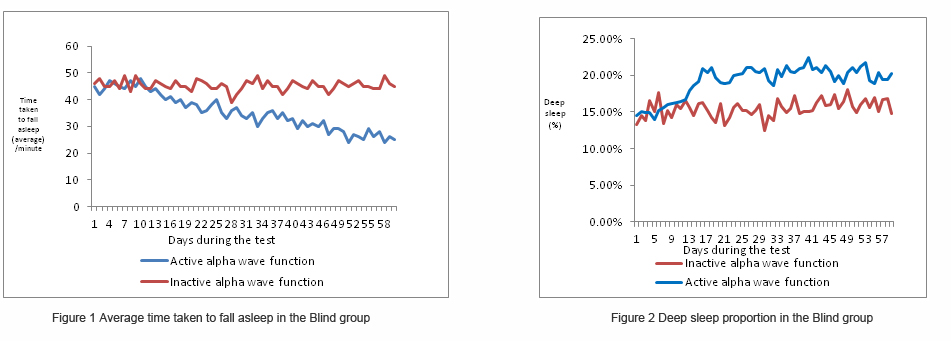 IV. CONCLUSION
IV. CONCLUSION
The alpha wave sleep induction chip system uses an all-natural approach without using any drugs, by combining the sleep induction chip technology with a brain wave bio-feedback system and deep artificial intelligence learning system, to effectively promote sleep. The data from the large-scale blind control clinical trial of 800 participants strongly suggests that the FitSleep α1 sleep induction device is able to reduce the time to fall asleep, increase the proportion of deep sleep, and raise the sleep quality score. The Control group data who are told the device is activated and are aware of its function displayed an even better sleep induction effect overall. Put together, this suggests that the FitSleep α1 sleep induction device is indeed able to effectively promote sleep and increase sleep quality.”
